White Rock, though on the geographically smaller side, has a colourful and rich history. From tumultuous beginnings to dance halls and a world-famous sandcastle contest, this little seaside town is one of the best places to visit for those looking for a good story and historic locations to explore. We’ve compiled some of the most exciting obscure facts, stories and attractions in White Rock to help you navigate this historic town on your next visit!
The changing faces of the White Rock pier
Aside from the white rock itself, the pier is easily one of the most iconic attractions in White Rock. However, the pier is more than just the average tourist attraction. For those intrigued by history, this is definitely one of the most interesting and complex historic structures in BC, taking on multiple appearances, burning down several times, and always surviving structural setbacks!
The earliest version of the pier was constructed in 1912, simply constructed as a sort of floating platform spanning 300ft out into the ocean. It was quickly destroyed by winter storms in 1913. A year later the pier started to be built into a similar structure to what we see today, assembled in a more sturdy fashion and stretching nearly 800ft out from the beach. Unfortunately, businesses and the city council alike realized that the bay’s low-tides were making such a short pier unusable when the tide went out every day. In 1915 the federal government agreed to fund an extension that would allow the pier to reach 1600ft out into the water!
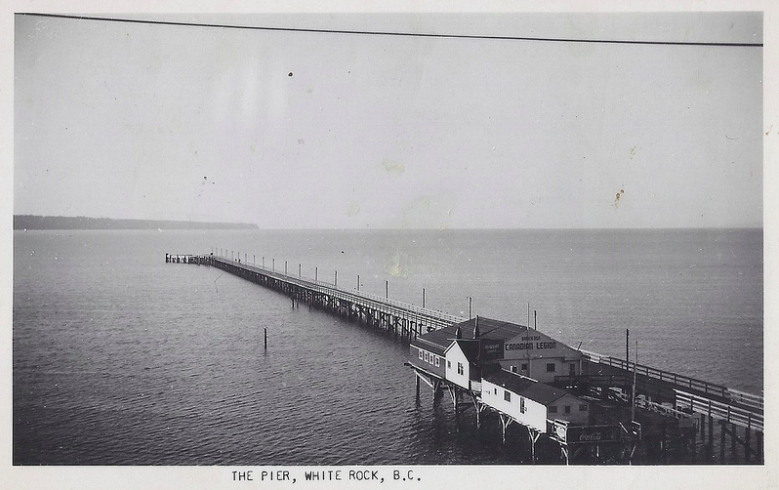
Pier and Legion No.8 circa 1948 – Sourced from Treasures from the Past on Flickr
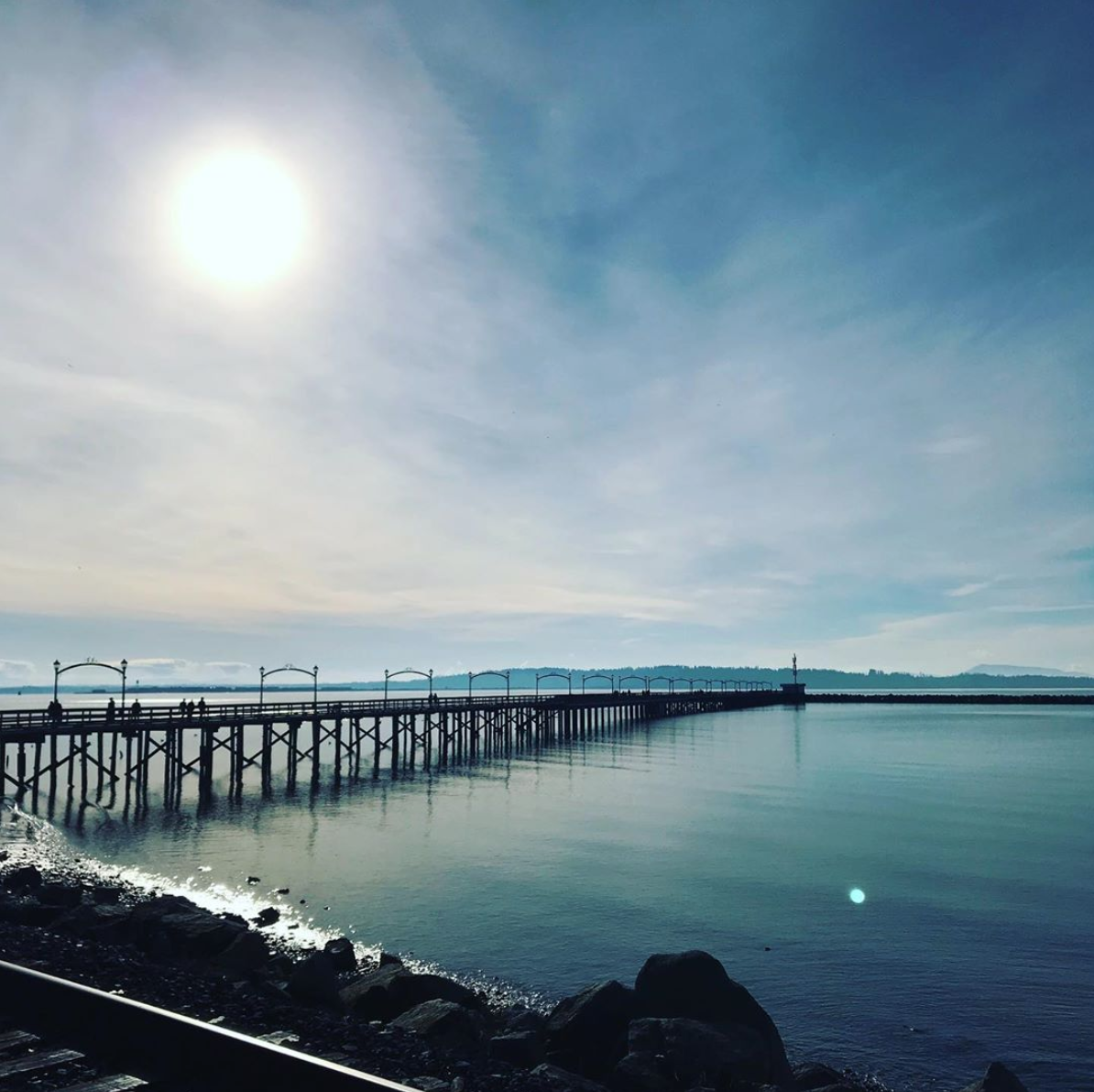
The modern pier – Photo credit to elisedufour1 on Instagram
Over the coming decades, the pier continuously fell into disrepair, each time rescued by government funding or aid efforts put on by the community. Three times the pier almost burned down as buildings on the edge caught fire! Damages of these blazes cost hundreds of thousands of dollars in today’s currency.
During the 1940s and 1950s (arguably the busiest era in White Rock’s history) the pier became home to the Dolphin Restaurant, the unofficial town hall and the swimming tank of the famous White Rock Amateur Swimming Association (originally built in 1921). However, in spite of it being White Rock’s golden age, the pier continued to see a lot of wear and tear due to drag racing teenagers! (Until the mid-1950s cars were allowed on the pier.)
On December 20, 2018, the White Rock Pier and sections of the beach and promenade were badly damaged in a severe windstorm. The damage split the pier in half and after months of repairs, the pier re-opened to the public in August 2019.
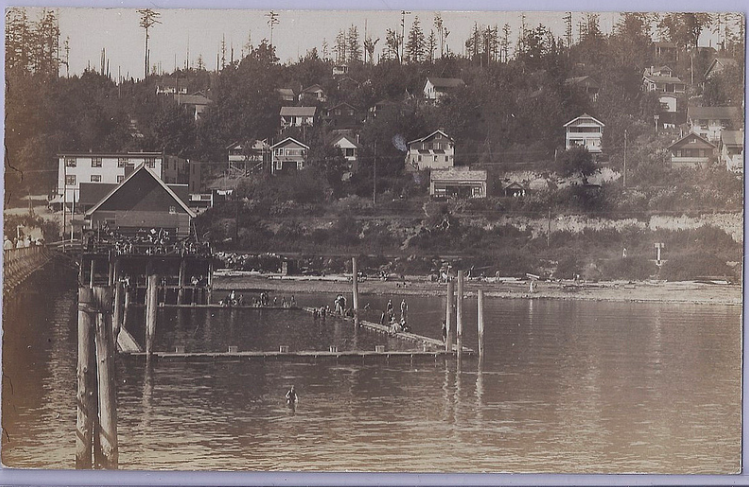
WRASA swim tank circa 1930, Canadian Legion no.8 visible adjacent to the pier.
Image sourced from Treasures From the Past on Flickr
The legend of the White Rock
Scientifically speaking the White Rock is thought to have landed on the shores of Semiahmoo Bay an estimated 11,000 years ago, dropped there by glaciers moving from the coastal mountains. The erratic weighs in at a massive 486 tons, made up of quartz, feldspar and mica. Though the rock was naturally white due to quartz content as well as an overwhelming amount of seagull poop, the rock is now painted white to prevent graffiti. The earliest graffiti appeared on the rock in 1907, a delinquent having painted “1907 Whitee Rock” on the side of the boulder.
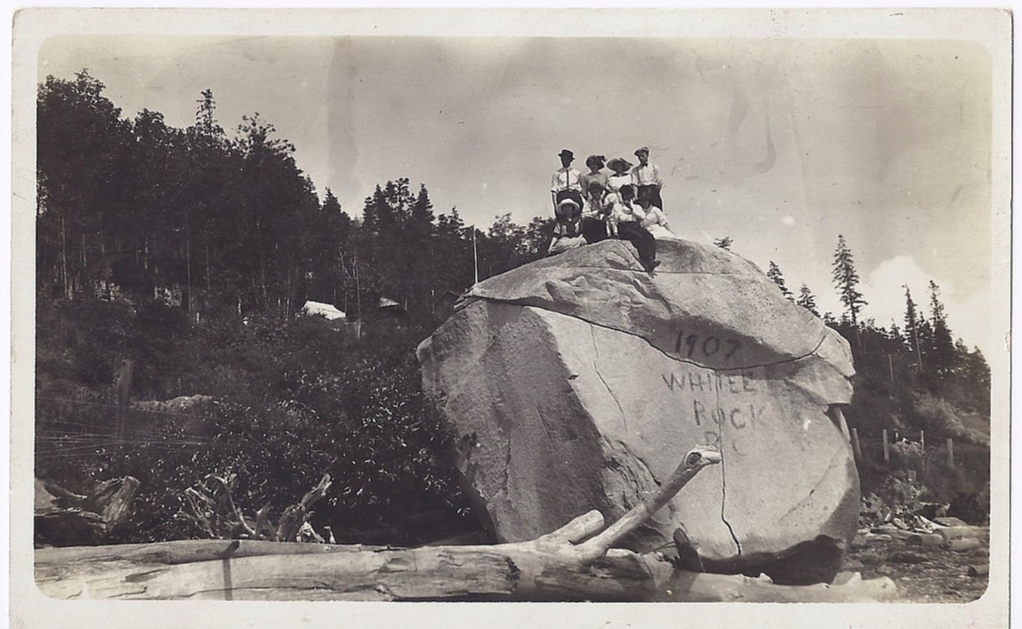
Circa 1908 – A family poses, 1907 graffiti can be spotted on the front of the boulder.
Sourced from Treasures From the Past on Flickr
There was a minor conspiracy theory that the rock had been moved by construction workers when building the road along the shore (now Marine Drive). Engineer Claude Harvey claimed that the rock was relocated using dynamite, though this accusation was never proved and is believed to be highly unlikely.
The story of the rock many are unfamiliar with is the story the Semiahmoo First Nations tells about how it landed on these shores. From Grand Chief Bernard Charles:
“Long before European settlers and explorers visited the Salish Sea, people lived here during a time when things were very different. People were attuned with nature and carried strong spiritual powers.
The Salish Sea was protected by a sea-being and his son. The sea provided an abundance of food to the tribes who lived along its shores. The Cowichan people and their chief were one of those tribes.
One day, the chief’s daughter was bathing in the sea. The son of the sea- being rose to the surface and fell in love with her at first sight. The pair hoped to receive the support of their parents, but the new couple was denied.
The young man was determined to keep his love at all cost. He raised a huge stone in his hands and said to his T/ále (love), “I will hurl this stone over the water! Wherever it falls, there we will make our home.” He cast the stone over the water and watched as it grew.
The young man took his new wife into his arms and swam after the great boulder. This huge stone landed sixty miles away, on the shores of Semiahmoo Bay. The couple chose to make their home here, and today this stone is known as P’Quals.”
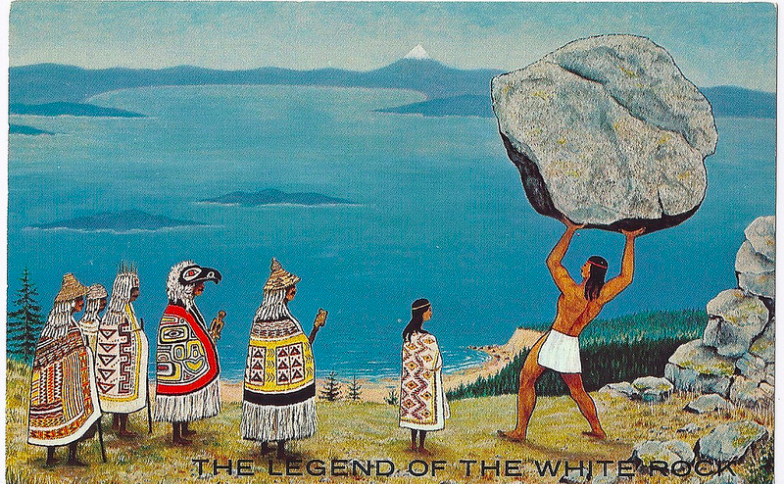
Original painting by Lorna Holcroft, sourced from Treasures from the Past on Flickr
Many people ask us if the city was named after the rock itself, and indeed it was! While to some it may seem silly to name a town after an object, the rock’s iconography was a big influencer in shaping the town you see today. Captain Vancouver himself used the rock as a beacon when exploring these shores long ago, as did the Semiahmoo First Nations and local sailors. Be sure to give this local landmark a visit next time you’re in town!
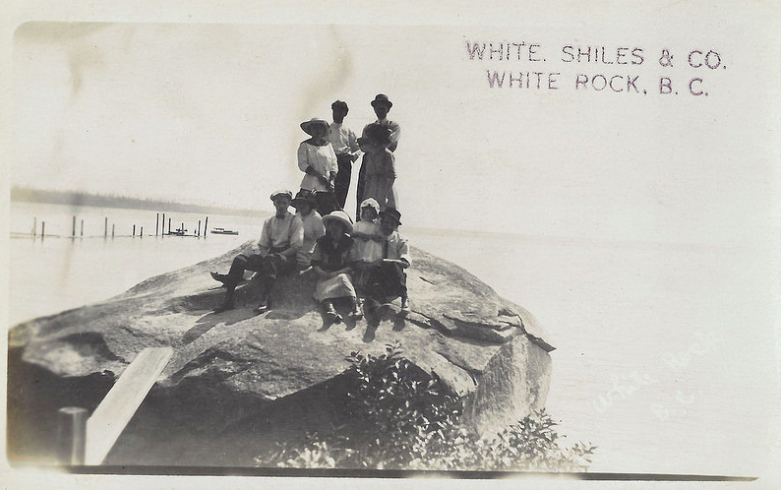
Circa 1913 – Tourists posing on the rock. From the White Rock Museum and Archives,
sourced from Treasures from the Past on Flickr
Restaurants that have stood the test of time
Looking to grab a bite to eat at one of White Rock’s original restaurants? Montgomery’s Cottage Lunch (though having changed hands over the generations) has been a staple on White Rock’s waterfront for almost a century. Operating under its current name since 1986, it existed long before that as the Americanuck and then Cottage Lunch during White Rock’s early days. Located in one of White Rock’s original buildings, you’re sure to get a dose of small-town heritage charm while trying their delicious fish n’ chips. This place is so good, people who visited as children return for more as adults!
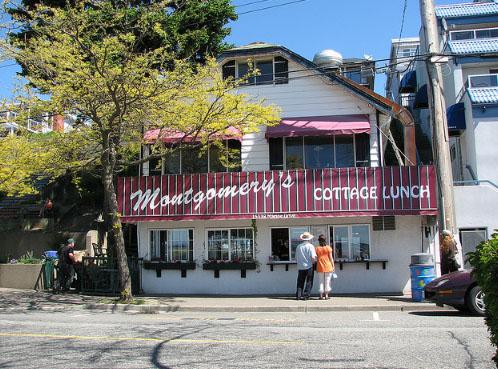
Image sourced from Dine Here
Moby Dick’s is one of White Rock’s most famous fish n’ chip joints – dining here is an experience! Ordained with fishing memorabilia and ocean-themed decor, eating in or taking out is always fun at Moby Dick’s. Operating since 1975, this local favourite has been open longer than the majority of businesses in White Rock making it a true classic! Be sure to give it a try to see what all the fuss is about.
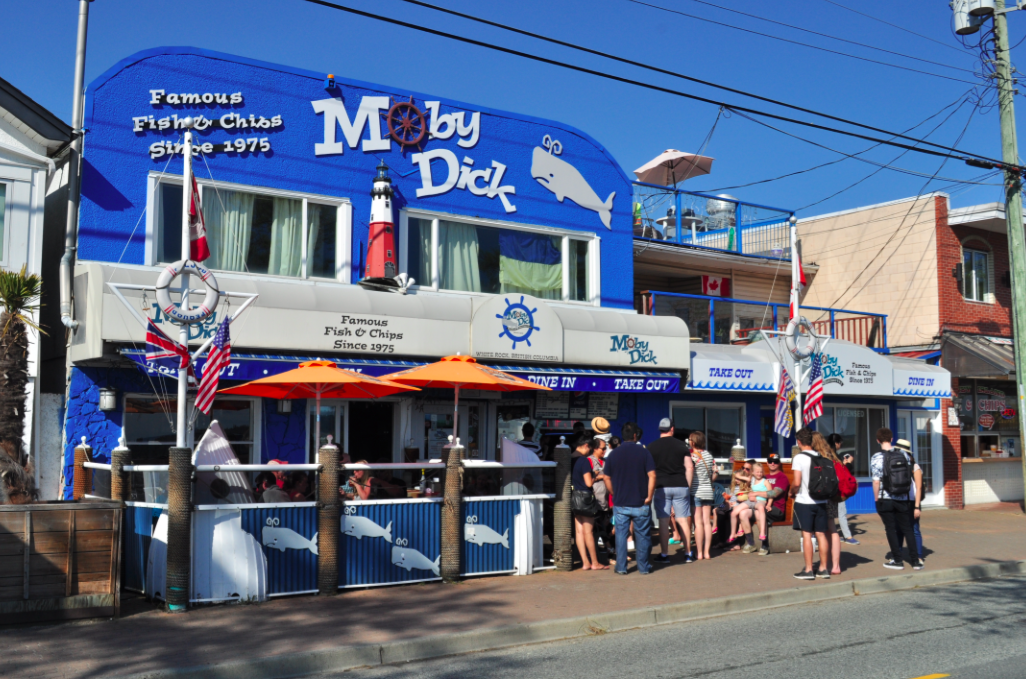
Image sourced from the Wikimedia Commons
The Five Corner’s Café is one of White Rock’s oldest establishments, dating back to the late 1940s. The owners have kept it exactly the same as when it was originally opened, offering an old-fashioned, homey diner vibe that always keeps the locals coming back for more! You won’t find a heritage experience like this anywhere else.
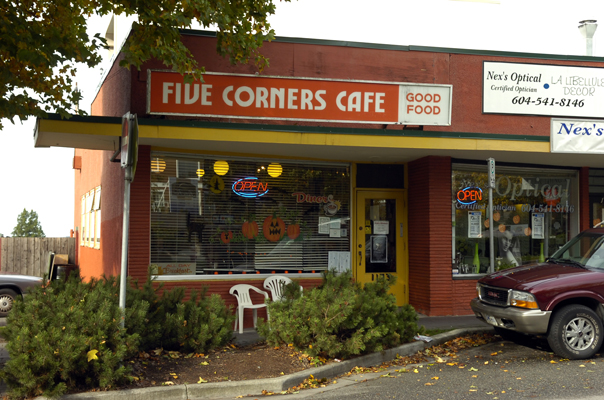
Image sourced from The Province
The Train Station
One of the reasons White Rock grew up into the town it is today is the historic train station on the waterfront. Now home to the White Rock Museum and Archives, the station is one of the few remaining buildings from White Rock’s early days (largely due to fires and other accidents eliminating other sites). While White Rock’s settlement began in the 1890s, it didn’t pick up until the Pacific Railway was routed through the small seaside town. Back in the day, it was required that stations and customs offices be built at least a mile from each border crossing, and White Rock was chosen as it was the closest settlement to Blaine, Washington. Prospector’s and settlers saw the potential this new port of entry brought and quickly White Rock’s community grew as people came in search of business opportunities.
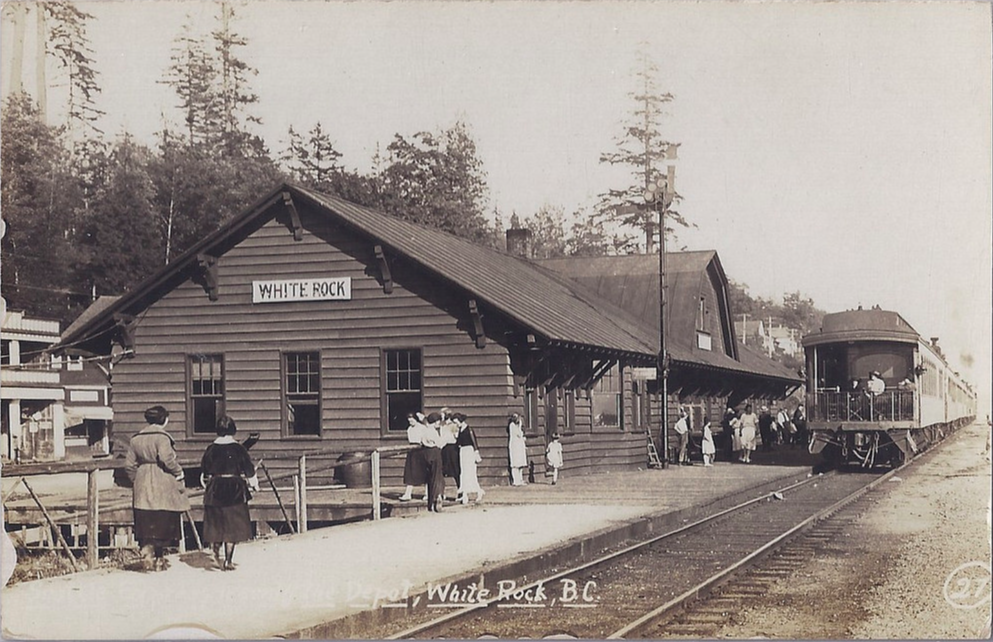
The station circa 1920 – Image sourced from Treasures from the Past on Flickr
Over a century later the building is occupied (and well taken care of) by the White Rock Museum and Archives, preserving White Rock’s history and showcasing the best parts of it. Visitors can visit the museum by donation and explore a replica of the old customs office, see the visiting exhibition, and experience the kids’ zone (there’s even a miniature train to play on!). The customs office exhibit provides a fun, hands-on opportunity to learn morse code and explore methods of rustic transportation and communication.
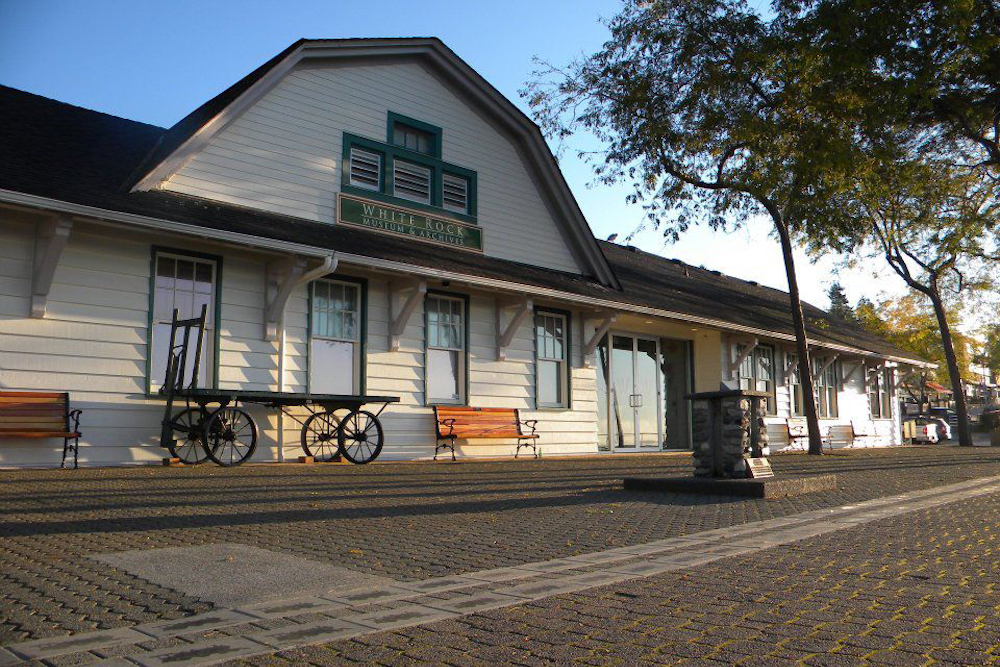
The museum/station today.
Story ~ The time when Elvis didn’t get off the train
Back in 1957, Elvis Presley was the biggest name in music all around the world. One afternoon in 1957 the train he was on stopped briefly in the little seaside town of White Rock on the way to a concert in Vancouver. This was quite out of the ordinary for a town like White Rock – though it didn’t gather as much attention as one might think when a celebrity is in town. Local resident Bob Meek recalled this day back in 2004 in an interview with White Rock historian Lorraine Ellenwood:
“I was on my way back to the beach. Near the station, I met Denise Warner who told me Elvis was a passenger on the GN train expected momentarily. I walked to the front of the station where not more than 8 or 10 people were waiting. The train stopped, and there was Elvis seated at a window. He got up and walked to the end of the car, but did not get off. There were waves and craning, but certainly no screams from the spectators. That night bunch of us crammed into a Volkswagen to drive into Empire Stadium to his concert, where the scene was riotous.”
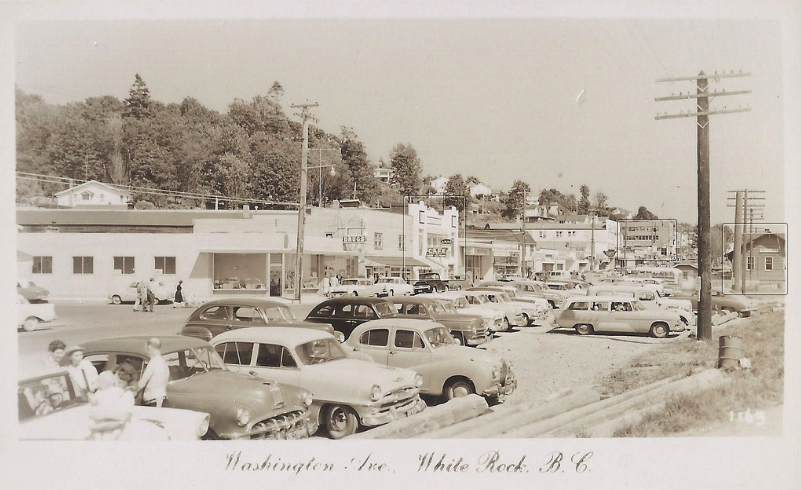
Marine Drive circa 1954 – Check out those cars! Sourced from Treasures From the Past on Flickr
Buildings that still stand
In spite of several setbacks (be it fires, floods or simple teardowns), several buildings in White Rock still stand from the days of old. One of the most famous locations (though not always recognized as a heritage building due to drastic structural changes) is the Coast Capital Playhouse. For many decades it was much smaller than it is today, a tiny theatre built out of a decommissioned store-front. Today, in spite of renovations and touch-ups made to the facility, the old dressing rooms still stand behind the stage and up some rickety old stairs. The audience may not see it, but it’s there! (And said to be haunted!)
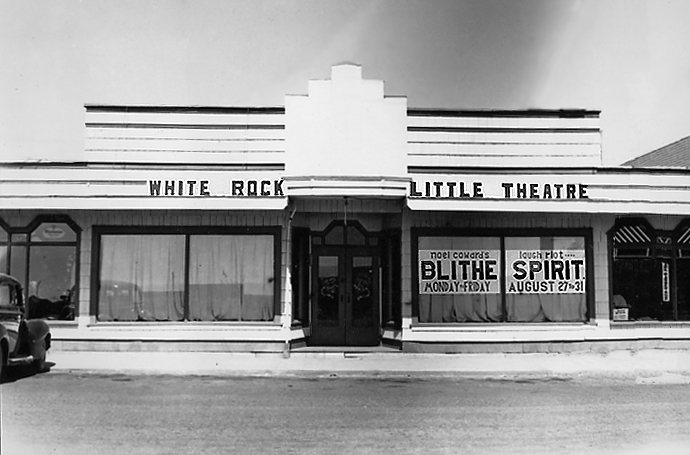
The Little Theatre as it looked back in 1950. It would be several more years before the theatre was up and running at its current location on Johnston Road – sourced from the White Rock Players’ Club
Along the waterfront, many other historic buildings still stand, seen in the background of antique photos and videos. Many of Marine Drive’s storefronts have become iconic local businesses such as Charlie Don’t Surf and the Ocean Beach. The Old Sun Building, a memory of White Rock’s beloved old newspaper is now home to a convenience store and pilates studio.
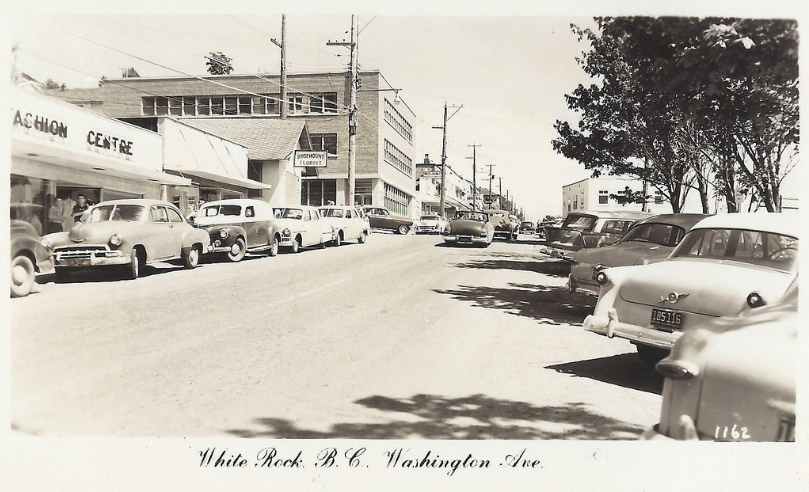
Circa 1956 – The building now home to office spaces and Dolce Gelato can be seen in the background.
Sourced from Treasures from the Past on Flickr
Alongside businesses, several original homes dot White Rock’s cityscape, including several early 20th century homes on the hump of Marine Drive, and along East Beach, mixed in with the businesses and storefronts. These heritage homes are lovely locations to stroll by when you’re in town!
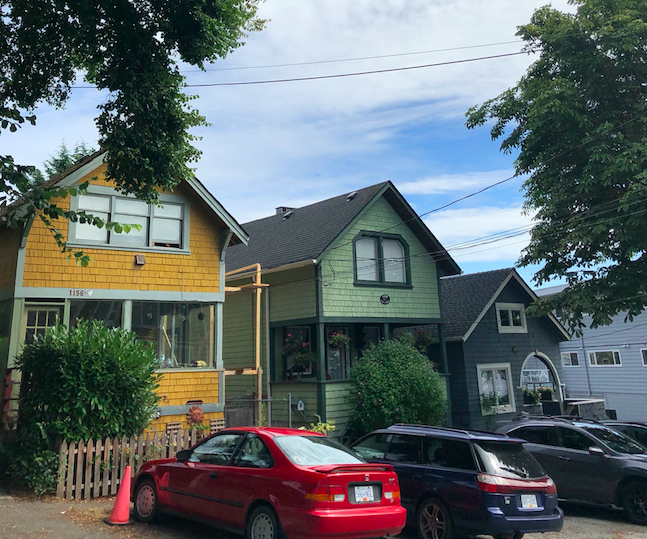
Heritage houses at Elm and Marine

Thank you so much for the trip down memory lane. I spent my childhood in White Rock. I still remember the tank where I took swimming lessons, the little theatre where I watched pantomimes with my mother and took ballet lessons with Madam Renyard. White Rock Elementary was my school. Five Corners Cafe is another spot our family went to. We lived at 15141 Marine Drive until 1962. Best childhood memories anyone could ever have.
Such wonderful memories! Thank you so much for sharing!